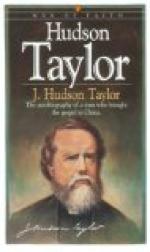* * *
Where round yon capes the banks ascend
Long shall the pilgrim’s footsteps
bend,
There, mirthful heart shall pause to sigh,
There tears shall dim the patriot’s
eye.
Robert C. Sands.
* * *
The plain marble slab which stood in the face of the monument is still preserved by a member of the King family. It is thirty-six inches long by twenty-six and a half inches wide and bears the following inscription: “As an expression of their affectionate regard to his Memory and their deep regret for his loss, the St. Andrew’s Society of the State of New York have erected this Monument.”
Quite a history attaches to this stone (graphically condensed by an old gardener of the King estate): “It stood in the face of the monument for sixteen years, and was read by thousands, but by 1820 the pillar had become an eyesore to the enlightened public sentiment of the age, and an agitation was begun in the public prints for its removal. It was not, however, organized effort, but the order of one man, that at length demolished the pillar. This man was Captain Deas, a peace-loving gentleman, strongly opposed to duelling and brawls, and on seeing a party approaching the grounds often interposed and sometimes succeeded in effecting a reconciliation. He became tired of seeing the pillar in his daily walks, and, in 1820, ordered his men to remove it and deposit the slab containing the inscription in one of the outbuildings of the estate. This was done. But a few months afterward the slab was stolen, and nothing more was heard of it until thirteen years later, when Mr. Hugh Maxwell, president of the St. Andrew’s Society, discovered it in a junk shop in New York. He at once purchased it and presented it to Mr. James G. King, who about this time came into possession of the Deas property, where it has since been carefully preserved.”
This mansion of Captain Deas afterward known as the “King House on the Cliff” was a stately residence where Washington Irving used to come and dream of his fair Manhattan across the river. It was also the head-quarters of Lafayette, after the battle of Brandywine.
* * *
I was an admirer of General
Hamilton, and I sicken
when I think of our political
broils, slanders and enmities.
Washington Irving.
* * *
The gardener also said: “the river road beneath us is cut directly through the spot. Originally it was simply a narrow and grassy shelf close up under the cliffs, six feet wide and eleven paces long. A great cedar tree stood at one end, and this sandbowlder, which we have also preserved, was at the other. It was about twenty feet above the river and was reached by a steep rocky path leading up from the Hudson, and, as there was then no road or path even along the base of the cliffs, it could be reached only by boats.” The first duel at Weehawken of which there is any record was in 1799, between Aaron Burr and John B. Church (Hamilton’s brother-in-law). The parties met and exchanged shots; neither was wounded. The seconds then induced Church to offer an apology and the affair terminated. The last duel was fought there September 28, 1845, and ended in a farce, the pistols being loaded with cork—a fitting termination to a relic of barbarism.




